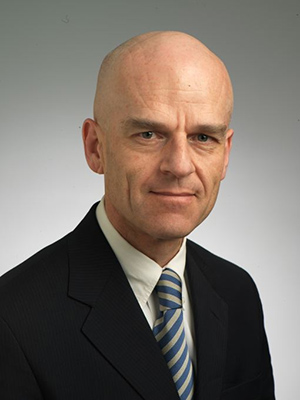
Innovation in Oman by Peter Bryant
Strong winds of economic change are blowing everywhere, and they rarely stop at borders. Every day we see evidence of this. New digital technologies, volatile global markets, international competitors, and more connected customers. Most companies and nations feel these winds. Smart ones are working hard to respond through innovation. Those who don’t or can’t are falling behind.
I already knew that Oman has ambitions to be among the winners in this global race. Before arriving, I read about the country’s progress in education, health and welfare, and the development of a free economy, especially under the leadership of His Majesty Sultan Qaboos. And also the recent drive for economic diversification, innovation and better opportunities at home. While sustaining the historical traditions and values of the country. But nothing could prepare me for what I found. As the saying goes, seeing is believing, and in this case, even more.
My first experience in Muscat was enlightening and impressive. Our partner in Oman, the management and training consultancy New Metrics, invited a group of executives, entrepreneurs and leaders to a session on innovation. We gathered at a seaside hotel for breakfast. The room looked out on the bay curving into the distance. As the coffee flowed, guests told me their stories of international export, business development and entrepreneurial startups, including successes and failures. They also spoke about the struggles of driving innovation and change. This was a great introduction to my talk on the topic.
We agreed that innovation is imperative for growth and competitiveness. This is clear for most leaders in business and government. But exactly how to innovate is not always clear. Mistake are common. What I observe in some places is that innovation is viewed as another project, like developing a new production facility or piece of infrastructure. People try to plan innovation in a traditional way. They create R&D units, hire experts, allocate budgets, open new buildings, set targets. But after a few years, not much has happened.
In fact, innovation is different. It requires another mindset, another way of thinking. What works in large efficient organizations, may not work for innovation. Because in order to innovate, you need to take more risks, think outside the box, experiment with uncertainty, and be ready to fail sometimes. Above all, you need to get close to customers, especially new potential customers, in order to understand their unmet needs and wants. But this is not easy. Successful companies find it particularly challenging. They tend to perpetuate the past and assume they already understand the customer. After all, they are successful. However, this kind of mindset prevents great innovation from happening. You need humility and courage to question the past, suspend your assumptions, and listen deeply.
I gave the following example in my talk. Imagine you want to buy a drill for home use. You therefore go to the shop and ask the sales person for advice about drills. But this sales person has been trained to explore deep customer needs. He asks, “why do you need a drill?” And you answer, “because I want to create a hole, of course.” The sales person is not satisfied, and asks another question, “why do you need a hole?” To which you answer, “because I want to hang some pictures.” In fact, you are becoming annoyed by now. But then he says, “we have a better solution for you that does not require drills and holes – you can use a cheaper, quicker adhesive hook to hang your pictures!” Of course, you are delighted. The sales person saved you money, time and work. Maybe the shop made less money on the sale, but your real need or “job to be done” was perfectly served.
Innovative companies do the same. They look deeply into customer needs, challenging prior assumptions and even their own existing products. From this perspective, innovation is a very human capability. We need to nurture this kind of open mindset, take more risks, encourage entrepreneurs and innovators. Fortunately, I saw this happening in Oman as well. It was on clear display at a Hackathon organized by NBO. The event involved many teams working intensely over 24 hours to develop innovative ideas for new products and services in banking and finance. When we arrived, they were almost at the end of the marathon. Many had not slept for a full day. But their energy and enthusiasm were still high.
I was greatly honored to speak to the participants, and to be one of the judges of the finalists. A range of teams presented their innovative ideas. Some were students from high school and university. Others were older and more experienced. One inspiring team was a whole family, including parents and children. But whatever their background and composition, they all exhibited the mindset of innovation. Pushing the boundaries, exploring new customer solutions, prepared to take a risk. Overall, it was a wonderful display of innovative energy and potential. And first class, equal to anything I have seen elsewhere.
After seeing these great examples of talent, leadership and commitment, I felt optimistic about innovation in Oman. They also helped me to understand how traditions might feed innovation. Because when you are grounded in values and customs which transcend the here and now, it could be easier to detach from existing market assumptions and look more deeply and beyond them.
The challenge now for Oman is to grow and accelerate these effects.
By Professor Peter Bryant

Professor Peter Bryant is the Professor of Entrepreneurship at IE Business School in Madrid, Spain.
Source:
http://www.businesstoday.co.om/Issues/Optimism-in-the-air/Innovation-in-Oman
